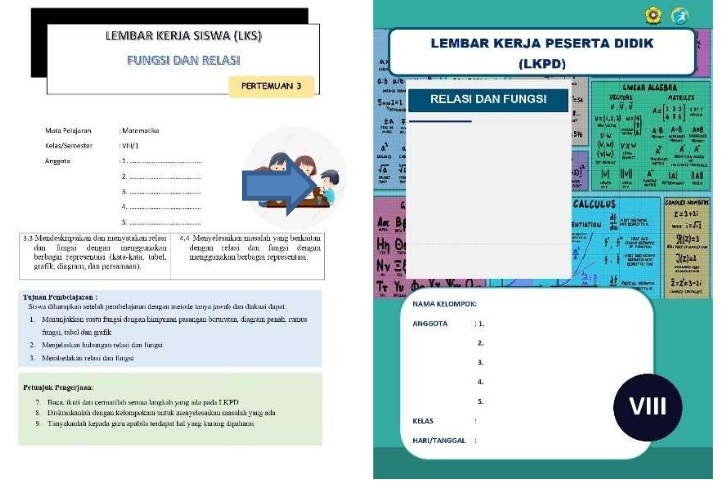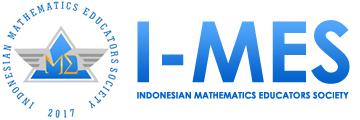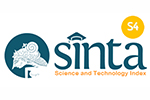DEVELOPMENT OF WORKSHEET RELATIONS AND FUNCTIONS PROBLEM-BASED LEARNING (PBL) FOR SUPPORTING ABILITY SOLVING PROBLEM
DOI:
https://doi.org/10.36706/jls.v6i2.15Keywords:
PBL, relations and functions, student’s worksheetAbstract
This is a design research study with the goal of developing worksheets based on relations and functions for valid, useful problem-based learning (PBL). to assist students in their problem-solving abilities. Examine The relevance of material relations and functions as material precondition material next, as well as the low background ability solving problem students have. subject of his research, eighth-grade SMP Palembang students. There are multiple phases to this study: 1) preliminary; 2) formative evaluation, which includes field testing, expert review, self-evaluation, and prototyping (one-on-one and small-group). Outcomes that were collected as work sheets. PBL stands for valid, practical problem-based learning based on student relations and functions. to assist students in their problem-solving abilities.
Downloads
References
Akker, J. (1999). Educational Design Research. Educational Design Research, 1–206. Retrieved from http://www.eric.ed.gov/ERICWebPortal/recordDetail?accno=EJ815766
Anggraeini, M. (2022). Development of Evidence-Based LKPD on Logarithm Material in Class X SMA. Scientific Journal of Mathematics Education, 4(1), 42–48.
Aulia, L., & Budiarti, Y. (2022). Implementation of Problem-Based Learning Model to Problem Solving Ability. Journal of Elementary School Education, 2(1).
Denbel, D. G. (2015). Journal of Education and Practice, 6(1). Retrieved from www.iiste.org
Dwi Putra, H., Thahiram, N. F., Ganiati, M., & Nuryana, D. (2018). Middle School Students' Mathematical Problem Solving Ability in Building Spatial Materials. JIPM (Journal of Mathematics Education), 6(2), 82–90. Retrieved from http://journal.unipma.ac.id/index.php/jipm
Havill, J. (n.d.). Discovering Computer Science. Retrieved from https://www.crcpress.com/Chapman--HallCRC-Textbooks-in-Computing/book-series/CANDHTEXCO
Hidayatati, E. (2022). Application of Problem-Based Learning Models to Improve Mathematical Problem Solving Ability. Scientific Journal of Mathematics Education, 2(1), 24–35.
Hudojo, H. (1988). Learn to Teach Math. Jakarta: Ministry of Education and Culture.
Idka Putri Br. Ginting, R. (2022). Development of Student Worksheets (LKPD) on the Subject of Relations and Functions for Middle School Students. JIMEDU, 2, 428–433.
Julianti, S., Melinia, A. G., & Saputri, N. (2021). Analysis of Problem Solving Ability Material Relations and Functions of Grade VIII Middle School Students. JUWARA: Journal of Insights and Literacy, 1(2), 95–104.
Khairul Putri Apertha, F., & Yusup, M. (2018). Open-Ended Problem-Based LKPD Development in Class VII. Journal of Mathematics Education, 12(2), 47–62.
Mita, D. S., Tambunan, L. R., & Izzati, N. (2019). In Solving PISA Problems. Scientific Journal of Mathematics Education, 1(2), 25–33.
Mulyati, T. (2016). Mathematical Problem Solving Ability of Elementary School Students. EDUHUMANIORA: Journal of Basic Education, 3(2), 1–20.
NCTM. (2000). Principles and Standards for School Mathematics. Reston, VA: National Council of Teachers of Mathematics.
Osin, A. E., Sesanti, N. R., & Marsitin, R. (2019). Development of Student Worksheet Based on Discovery Learning on Social Arithmetic. Unikama SENASTEK Semnas, 2. Retrieved from https://conference.unikama.ac.id/artikel/index.php/senastek/article/view/106
Purba, U. A., & Warmi, A. (2022). Analysis of Middle School Students' Mathematical Problem Solving Ability in the Material of Relations and Functions. Prism, 11(1), 82. https://doi.org/10.35194/jp.v11i1.2000
Rahmadona, D., Putri, A. D., & Ramury, F. (2021). PMRI on Ball Material for Participants. Jurnal Pendidikan Matematika, 8(1), 71–81.
Subaidah. (2020). Ability to Solve Mathematical Problems for Class X IPS SMA Wijaya Putra Surabaya on the Material of Three Variable Linear Equation Systems with Polya Theory. Ed-Humanistics: Journal of Educational Sciences, 5(1), 674–680. https://doi.org/10.33752/ed-humanistics.v5i1.710
Sudia, M., & Lambertus. (2017). Profile of High School Students' Mathematical Reasoning to Solve Problems Viewed from Cognitive Style. International Journal of Education and Research, 5(6), 163–174.
Sugiyono. (2013). Understanding Qualitative Research. Bandung: Alfabeta.
Sumartini, T. S. (2016). Increasing Students' Mathematical Problem Solving Ability through Problem-Based Learning. Mosharafa: Journal of Mathematics Education, 5(2), 1–7. Retrieved from https://scholar.googleusercontent.com
Syahbana, A. (2012). Development of Contextual-Based Learning Tools to Measure Middle School Students' Mathematical Critical Thinking Ability. Edumatica, 2(2), 17–26.
Tan, O. (2003). Problem-Based Learning Innovation: Using Problems to Power Learning in the 21st Century. Thomson Learning.
Tessmer, M. (1993). Planning and Conducting Formative Evaluation. Kogan Page.
Wee, L. K. N., & Kek, M. Y. C. A. (2002). Authentic Problem-Based Learning: Rewriting Business Education. Prentice Hall.
Zulfah, Z. (2018). Preliminary Research Stage of PBL-Based LKPD Development for Semester 1 Mathematics Material for Grade VIII Middle School. Scholar's Journal: Journal of Mathematics Education, 2(2), 1–12. https://doi.org/10.31004/cendekia.v2i2.57

Downloads
Published
How to Cite
Issue
Section
Citation Check
License
Copyright (c) 2025 Weni Dwi Pratiwi, Cecil Hiltrimartin

This work is licensed under a Creative Commons Attribution 4.0 International License.











